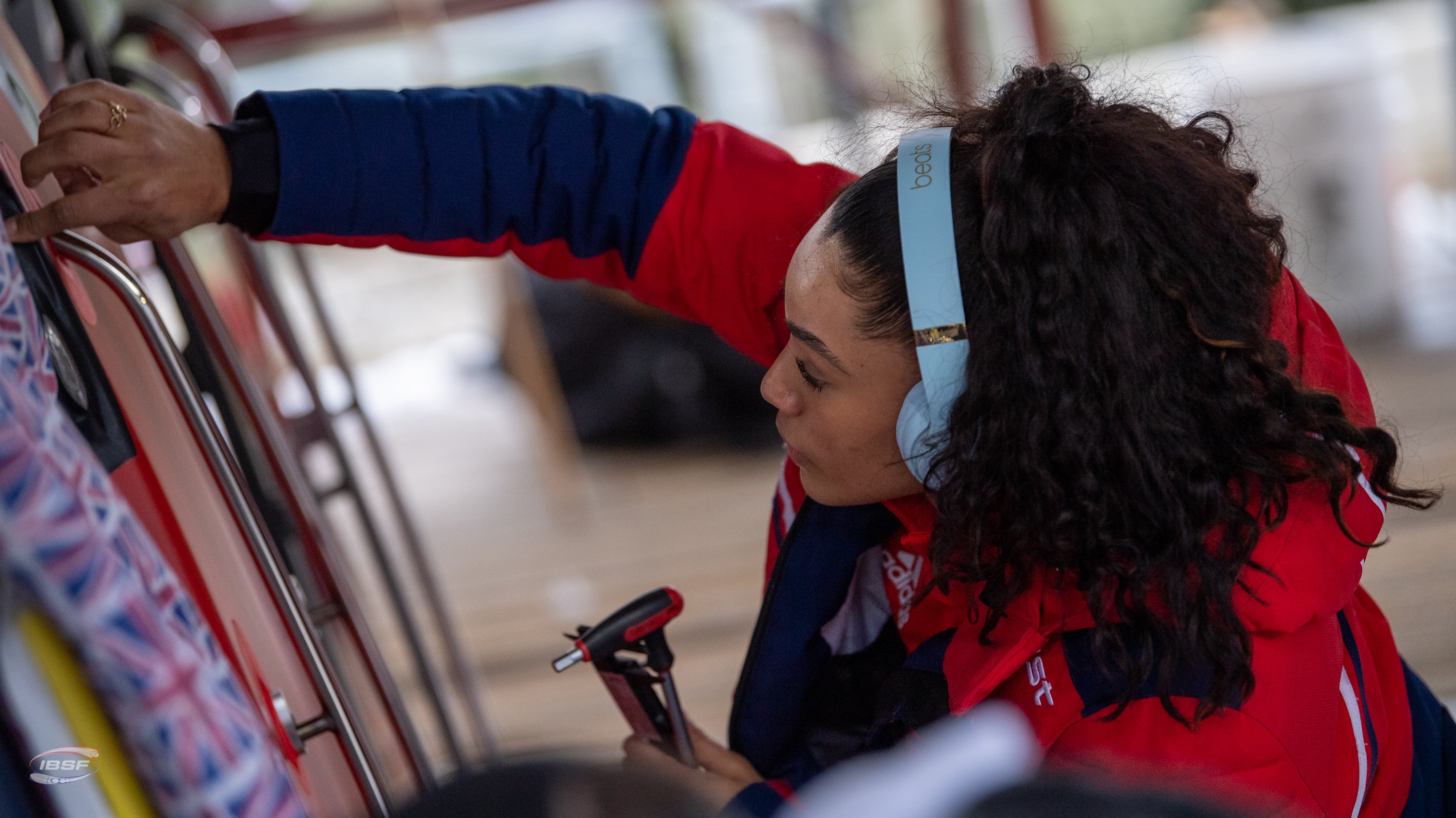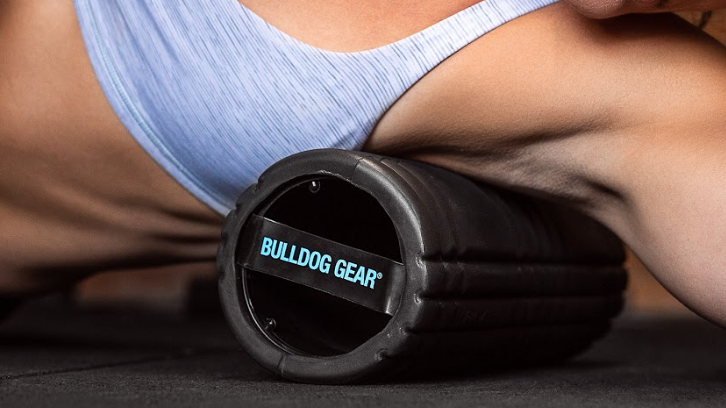|
16/02/2022 | Andrew Tracey Andrew Tracey is a long time collaborator with Bulldog Gear. A coach, writer and current fitness editor of Men’s Health Magazine, he has been in and around the fitness industry for the past 16 years. Having enjoyed and endured a number of disciplines from endurance racing, to strongman, to Crossfit AT enjoys getting neck deep in the practice just as much as the theory. |
Whether you can’t make classes, have tried every programme under the sun or are just tired of meandering aimlessly around the gym to no effect, there comes a time in every trainees life when they decide to take ownership of their gym routine, and plot out their own workout plan.
Whilst writing a comprehensive training regime is an art that takes years of experience to master, and it would frankly be impossible to condense into the space of a few blog articles, if you’ve decided to take the plunge, unzip your pencil case and get to plotting, the least we can do is provide you with some tips, to help guide the way.
Specific goals will a always require a specific approach, so for the purpose of this article we’re talking about the type of holistic cross training that helps you to feel better, look better and perform better.
In part one of this series we covered the various ways you can split your training over the course of a week, based on the time you have available, as well as your goals. With an approach picked that best balances your lifestyle with your desired outcomes, in this part we’ll dive into the sets, reps and movements that are going to make up each session.
As stated in part one, this is by no means a definitive statement on a what a good workout programme should look like, many approaches work and anecdotally we often see completely polarised approaches achieving the same results. Two plus two equals four, but that doesn’t mean that three plus one doesn’t.
Follow these guidelines, but don’t be afraid to tinker. Experiment in the laboratory of your own life to find an approach that strikes a balance between what you enjoy and what works.

FULL BODY TRAINING
In part one we established that full body training is a great approach in any circumstances, but it may be the only approach worth considering if you’re limited to 1-2 training days per week.
Our aim is to hit our entire body in each session, but that doesn’t mean we can’t have an individual strength focus in each session, before moving into higher rep ranges for the rest of the body. Alternating between these ‘primary’ lifts each session, or an alternating upper/lower body basis will enable you to hit your body with a full spread of rep ranges and accessory movements.
Insert your favoured movements into this template, spread them across the week(s) and alternate sessions, attempting to progressively add more weight once you can complete all sets/reps as prescribed.
For the purpose of this article, exercises will be divided up by ‘movement pattern’. These are fairly intuitive to understand- ‘pushing’ involves pushing a weight away from the midline of your body, ‘pulling’ involves drawing a weight towards your body, ‘squats’ are knee dominant lower body movements (that usually have ‘squat’ in the name), and hinge movements are any hip dominant movements such as deadlifts and swings. For vertical/horizontal pushing and pulling, think about the direction the weight is moving in relation to your body ie. ‘vertical pushing’ involves pressing weights above your head with an upright torso, whereas ‘horizontal’ pulling entails pulling a weight towards your body at an angle perpendicular to your torso.
Session One
A. 5 x 5 Compound Upper Body Pushing Movement (rest 2-3 minutes between sets)
5-6 rounds (rest 1-2 minutes between sets, or reduce rest to minimal for a greater conditioning effect)—
B1. 8 x Squat movement
B2. 10 x Upper Body Pulling movement
B3. 12 x Hinge movement
B4. 14 x Tricep accessory movement
C. Optional goal dependent metabolic conditioning- ie. 10 minute machine chipper/ burpee ladder/ rowing intervals.
Session Two
A. 5 x 5 Lower Body Squat Movement (rest 2-3 minutes between sets)
5-6 rounds (rest 1-2 minutes between sets, or reduce rest to minimal for a greater conditioning effect)—
B1. 8 x Upper Body Pulling movement
B2. 10 x Upper Body Pushing movement
B3. 12 x Hinge movement
B4. 14 x Quad/Hams accessory movement
C. Optional goal dependent metabolic conditioning- ie. 10 minute machine chipper/ burpee ladder/ rowing intervals.
Session Three
A. 5 x 5 Compound Upper Body Pulling Movement (rest 2-3 minutes between sets)
5-6 rounds (rest 1-2 minutes between sets, or reduce rest to minimal for a greater conditioning effect)—
B1. 8 x Upper Body Pushing Movement
B2. 10 x Hinge movement
B3. 12 x Upper Body Pushing Movement
B4. 14 x Bicep accessory movement
C. Optional goal dependent metabolic conditioning- ie. 10 minute machine chipper/ burpee ladder/ rowing intervals.
Session Four
A. 5 x 5 Hinging Movement (rest 2-3 minutes between sets)
5-6 rounds (rest 1-2 minutes between sets, or reduce rest to minimal for a greater conditioning effect)—
B1. 8 x Upper Body Pulling Movement
B2. 10 x Upper Body Pushing Movement
B3. 12 x Squat Movement
B4. 14 x Core accessory movement
C. Optional goal dependent metabolic conditioning- ie. 10 minute machine chipper/ burpee ladder/ rowing intervals.

UPPER/ LOWER SPLIT
Alternating between upper body and lower body sessions will enable you to focus your volume and intensity in one area, before giving that area ample rest time. This could be ideal for people training for hypertrophy who have been following a full body routine for some time and have plateaued.
Insert your favoured movements into this template, spread them across the week(s) and alternate sessions, attempting to progressively add more weight once you can complete all sets/reps as prescribed.
Session One
A1. 5 x 5 Compound Horizontal Pulling Movement
A2. 5 x 5 Compound Vertical Pushing Movement (rest 2-3 minutes between supersets)
B1. 4 x 10-15 Vertical Pulling Accessory Movement
B2. 4 x 10-15 Horizontal Pushing Accessory Movement
C. 4 x 20 Core movement
D. Optional goal dependent metabolic conditioning- ie. 10 minute machine chipper/ burpee ladder/ rowing intervals.
Session Two
A1. 5 x 5 Quad dominant/ Squat Movement (rest 2-3 minutes between supersets)
B1. 4 x 10-15 Lunge/ Unilateral leg Movement
B2. 4 x 10-15 Hinge Movement
C. 4 x 20 Core movement
D. Optional goal dependent metabolic conditioning- ie. 10 minute machine chipper/ burpee ladder/ rowing intervals.
Session Three
A1. 5 x 5 Compound Vertical Pulling Movement
A2. 5 x 5 Compound Horizontal Pushing Movement (rest 2-3 minutes between supersets)
B1. 4 x 10-15 Horizontal Pulling Accessory Movement
B2. 4 x 10-15 Vertical Pushing Accessory Movement
C. 4 x 20 Core movement
D. Optional goal dependent metabolic conditioning- ie. 10 minute machine chipper/ burpee ladder/ rowing intervals.
Session Four
A1. 5 x 5 Compound Hinge/ Deadlift Movement (rest 2-3 minutes between supersets)
B1. 4 x 10-15 Squat Movement
B2. 4 x 10-15 Lunge/ Unilateral leg Movement
C. 4 x 20 Core movement
D. Optional goal dependent metabolic conditioning- ie. 10 minute machine chipper/ burpee ladder/ rowing intervals.

Push/ Pull/ Lower Split
By alternating through push, pull and lower throughout the week before resetting, based on a 5-6 day training week you will expose each muscle group to both a concentrated stimulus in each session, but also a high frequency of exposure over a 10-12 day period. Current scientific literature suggests that this balance of intensity and frequency is ideal for muscle growth.
If your goals are more strength or performance oriented ‘push/pull/lower’ will allow you to focus on one big lift each session whilst still recovering adequately between bouts to ensure progress.
Insert your favoured movements into this template, spread them across the week(s) and alternate sessions, attempting to progressively add more weight once you can complete all sets/reps as prescribed.
Session One
A. 5 x 3-5 Compound Vertical Pushing Movement (rest 2-3 minutes between supersets)
B1. 4 x 10-15 Horizontal Pushing Accessory Movement
B2. 4 x 10-15 Tricep Accessory Movement
C. 4 x 20 Core movement
D. Optional goal dependent metabolic conditioning- ie. 10 minute machine chipper/ burpee ladder/ rowing intervals.
Session Two
A. 5 x 3-5 Compound Vertical Pulling Movement (rest 2-3 minutes between supersets)
B1. 4 x 10-15 Horizontal Pulling Accessory Movement
B2. 4 x 10-15 Bicep Accessory Movement
C. 4 x 20 Core movement
D. Optional goal dependent metabolic conditioning- ie. 10 minute machine chipper/ burpee ladder/ rowing intervals.
Session Three
A. 5 x 3-5 Squat Movement (rest 2-3 minutes between supersets)
B1. 4 x 10-15 Lunge Movement
B2. 4 x 10-15 Hinge Movement
C. 4 x 20 Core movement
D. Optional goal dependent metabolic conditioning- ie. 10 minute machine chipper/ burpee ladder/ rowing intervals.
Session Four
A. 5 x 3-5 Compound Horizontal Pushing Movement (rest 2-3 minutes between supersets)
B1. 4 x 10-15 Vertical Pushing/ Shoulder Accessory Movement
B2. 4 x 10-15 Tricep Accessory Movement
C. 4 x 20 Core movement
D. Optional goal dependent metabolic conditioning- ie. 10 minute machine chipper/ burpee ladder/ rowing intervals.
Session Five
A. 5 x 3-5 Compound Horizontal Pulling Movement (rest 2-3 minutes between supersets)
B1. 4 x 10-15 Vertical Pulling Accessory Movement
B2. 4 x 10-15 Bicep Accessory Movement
C. 4 x 20 Core movement
D. Optional goal dependent metabolic conditioning- ie. 10 minute machine chipper/ burpee ladder/ rowing intervals.
Session Six
A. 5 x 3-5 Hinge/ Deadlift Movement (rest 2-3 minutes between supersets)
B1. 4 x 10-15 Lunge Movement
B2. 4 x 10-15 Squat Movement
C. 4 x 20 Core movement
D. Optional goal dependent metabolic conditioning- ie. 10 minute machine chipper/ burpee ladder/ rowing intervals.



